Your First Plein Air Event: Part One, Getting Ready
Practical advice for new outdoor painters and plein air competitors
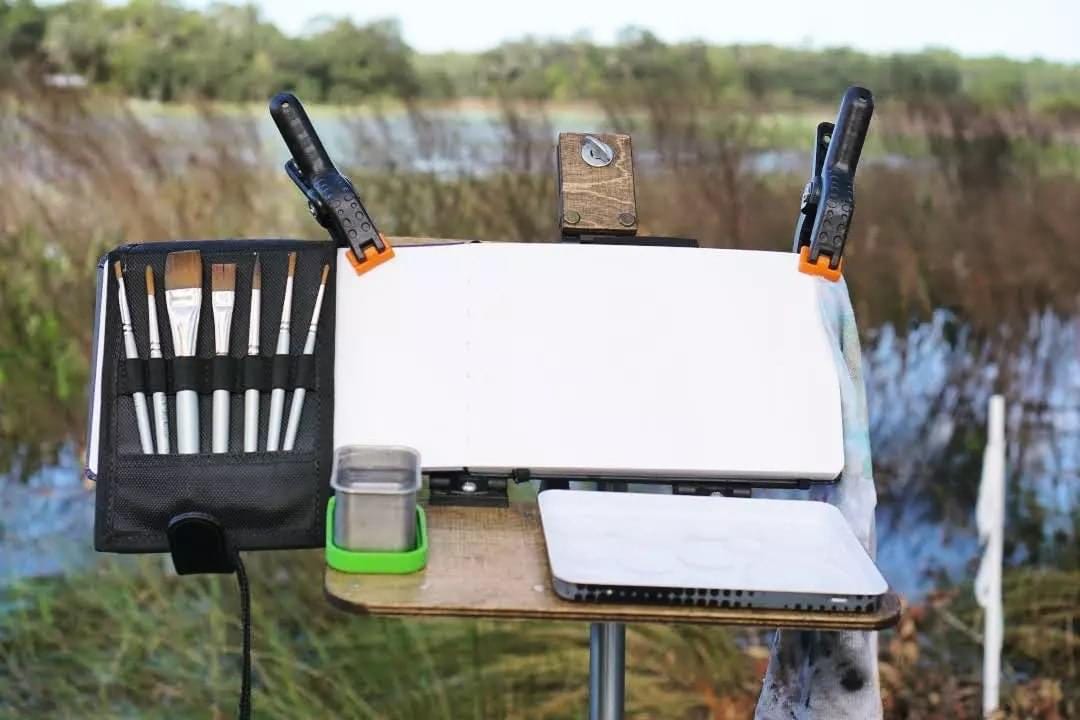
If you’re serious about wanting to try plein air painting for the first time (painting the outdoors while outdoors) but don’t know how to start, here’s some practical advice based on my own experiences with plein air painting and festivals/competitions.
This is part one of a three-part series. In part two I will cover the process of painting on location and framing for a gallery show.
Part three of this article will include a step-by-step examination of how I created my recent, prize-winning plein air painting Little Ladies Egg Co., and will be available to all my Paid Subscribers.
Artist’s Cheat Sheet is read thousands of times a month by hundreds of subscribers. You can learn more about Paid Subscriber benefits by tapping “Subscribe” below!
Summary
In part one I’ll cover the following tips on getting ready to paint outdoors:
Deciding if you want to compete or paint for pleasure
The benefits of sketching in groups
Preparing materials and yourself for outdoor painting
Plein air painting competitions
Warm weather is here, and plein air painting competitions are underway all across the country! I’ve painted in Plein Air West Reading these last three Junes, securing a second-place win in two of those years; maybe some July I’ll try to earn a spot in Plein Air Easton in Maryland— the largest and most prestigious competition in the US.
How to get into a plein air competition
Calls for artists are typically announced in winter so that the juried artists can compete in the spring and summer; some events coincide with the northeast’s beautiful, autumn foliage season. Get yourself on mailing lists for plein air events (check with your local art galleries), ones you think you can travel to, and build a portfolio. To enter a competition you’ll need well-lit photos of a few recent plein air paintings, and usually an entry fee of about $40-$50.
Why compete?
Taking part in a plein air festival provides some great opportunities: to become part of a community of fellow artists, organizers, sponsors, and hosts; to learn new skills, especially how to see and paint faster; and to challenge oneself.
It’s quite exciting to arrive on check-in day with blank canvases, and to think that these, and all the other artists’ empty canvases, will be filled with art one week later!
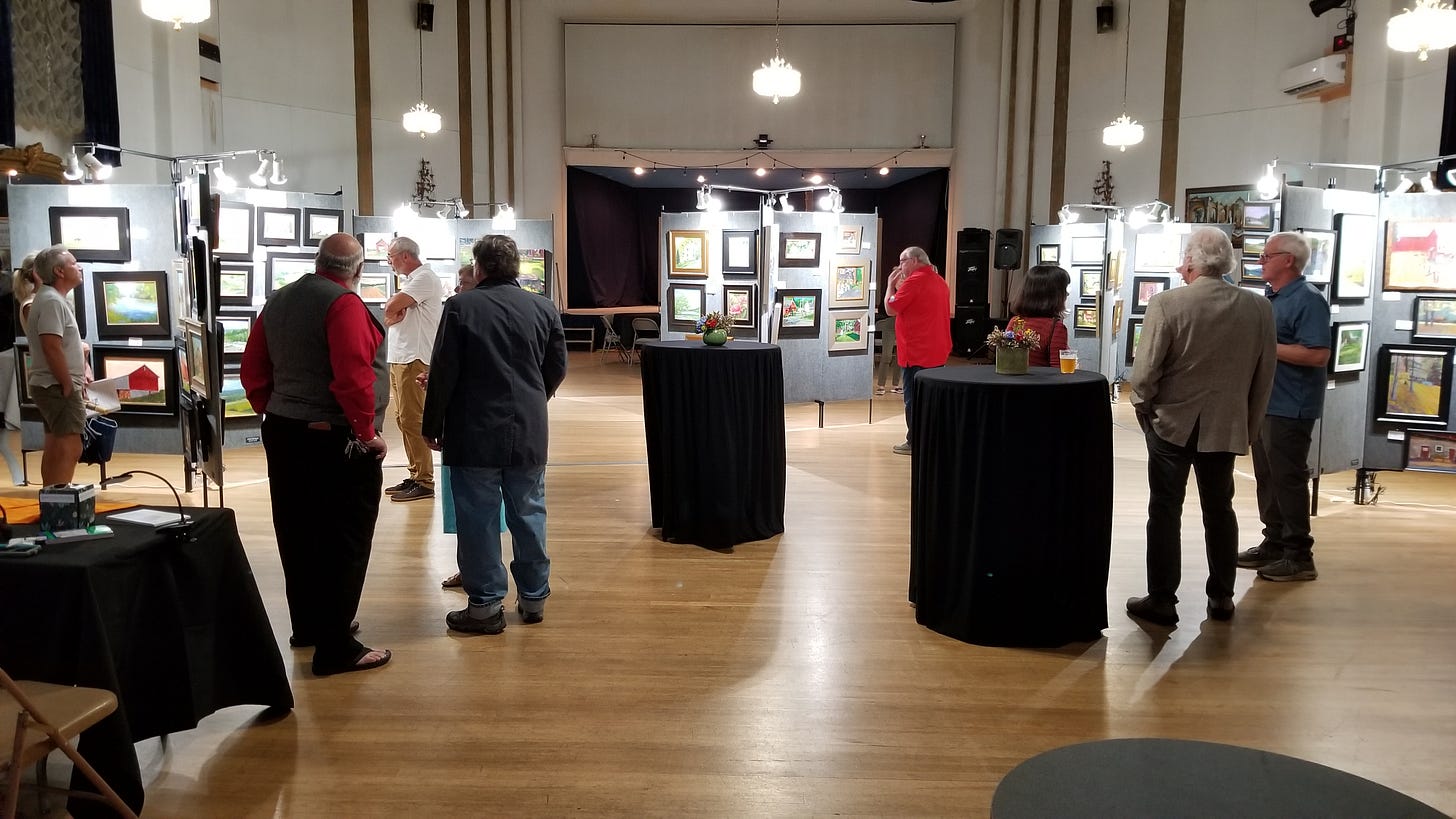
Quick draw, an easier option
Most plein air competitions include a separate “quick draw” event that lasts about two hours. (Check event schedules!) Members of the public are welcome to participate for a small fee (usually about $10). In the case of Plein Air Easton, there is a top quick draw prize of $1500 and automatic acceptance into the following year’s juried event.
Quick draws might be a nice entry point for new plein air painters.
Rejection
There’s always the risk of rejection in competitive situations. In fact I was not originally juried into the show that I just won! But, if you can mentally reframe competition in a positive light— that it is a chance to learn from others and from your own mistakes, and a time to make friends— and if you can remember that jurors all have subjective points of view— then rejection may be easier to accept.
Of course anyone can paint en plein air at any time, in any season (some even paint at night, or in the cold months). No competition required.
Sketching in groups for pleasure
Whether you’re looking to compete or not, you’ll want to practice improving your observational drawing skills and increasing your speed. Group sketching can help with that.
Sketch organizations
Sketch groups are easy to find thanks to Google; for example in my hometown there’s the Reading Drawing Guild led by Diane Zerr. She organizes and publicizes a unique sketch location each month— next up is a city rooftop!
Urban Sketchers chapters are located in cities around the world. I’ve enjoyed drawing with New York City Urban Sketchers a number of times including at the New York Botanical Garden, and online where we had a portrait party.
My friend Benji sketches with group called Drink and Draw in the arts-friendly city of Basel, Switzerland.
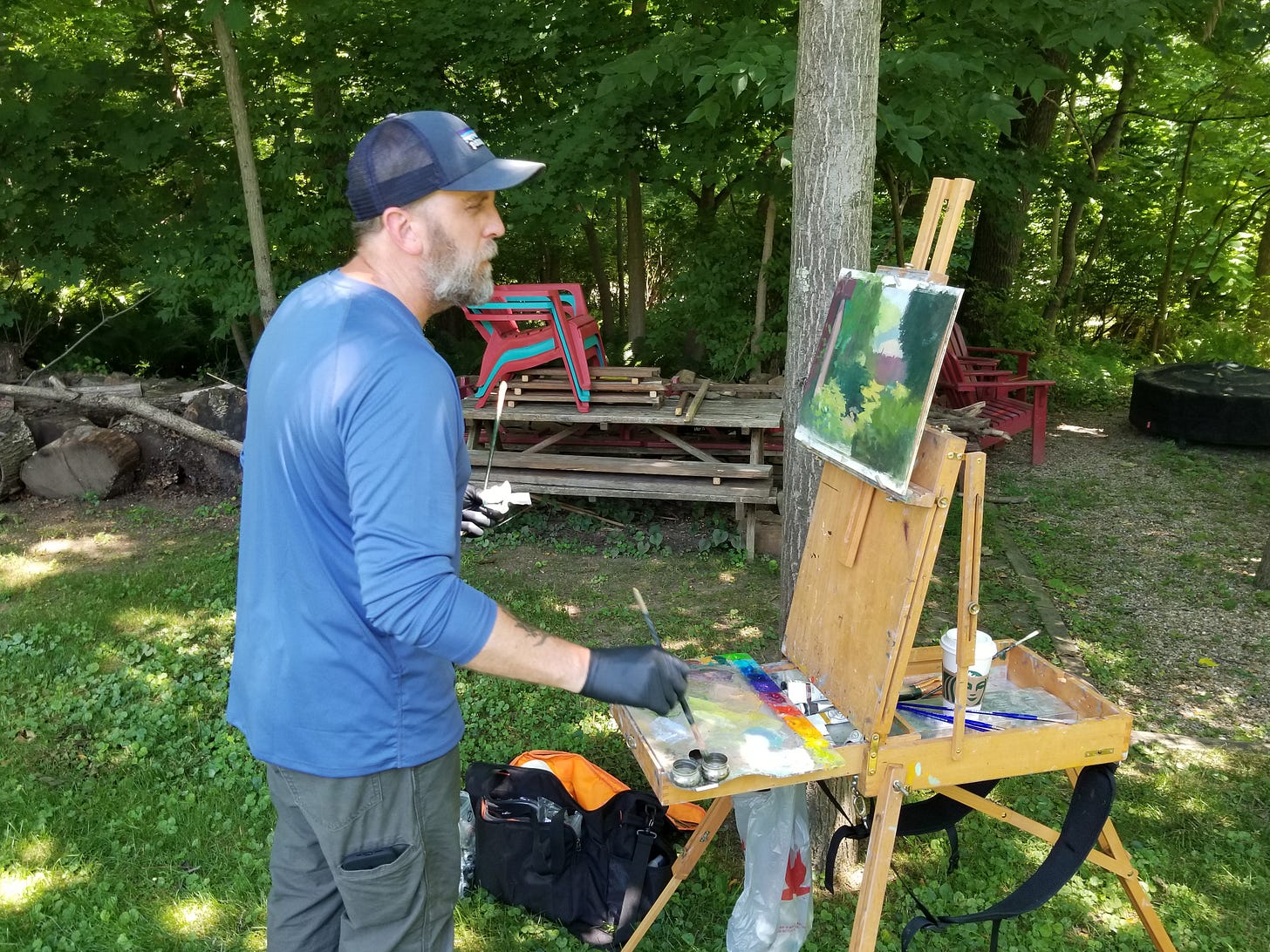
Form your own sketch group
You can always organize a group of sketch friends yourself, as some of my painting students have done. It helps in these situations if one person can act as the cheerleader and organizer to keep everyone informed of plans.
Like a workout partner, a sketch group helps to keep you accountable and provides a sense of community and opportunity to learn from one another. In my experience they are always friendly spaces.
Preparing to paint outdoors
You’ll want a few essentials for a basic painting setup and for staying comfortable during your outdoor paint session. I’m not an oil painter so I’ll mostly focus on water-based media. In general you’ll want to keep things as lightweight as possible.
Lightweight easels, supply bags
I use a lightweight, folding aluminum easel for canvases, and I also have a small, self-built Gurney easel. A traditional, wooden, French easel is a popular option, solid and reliable but maybe a bit bulky. A French easel has storage space for supplies (no extra bag needed) and unfolds into a standing easel with a flat surface to hold your palette, paints, brushes, and so on.
I use a canvas bag, a backpack, or sometimes a smaller waist bag to carry other items like paints, mediums, brushes, a sealed water jar (to carry water in, and to carry dirty water out), paper towels, and palette. People who practice fast urban sketching sometimes like to have a dedicated, grab-and-go bag filled with assorted watercolors, pens, chalks, pencils, and so on.
Modified French easel
Aaron Thompson, a painter friend who teaches at Pennsylvania College of Art and Design and who was a multiple prize-winning artist in this year’s Plein Air West Reading, has a modified French easel with backpacking straps that he bought online. I tried it on, and it was very comfortable! Artists tend to be great problem solvers.
Taboret— where do I put my stuff?
If you don’t have a French easel, consider how you’ll reach for your art supplies while painting, especially if you plan to stand. In a studio setting, the taboret plays this role— a small side table that holds painting accessories.
My Gurney easel is compact and suitable for small watercolor sketchbooks; the brushes, water, paints, and palette are all located within a condensed area near the painting.
If I’m doing bulkier paintings like acrylic on canvas, I use the aluminum easel, and I bring a small “TV dinner” side table to hold art materials. A cloth cover (usually the empty canvas bag in which I carried supplies) prevents things from sliding on the smooth, plastic surface.
There are shelves you can purchase, or make, that will clip onto the easel or tripod.
Seating
A folding camp stool may be useful if you’d like to sit, and in some cases you’ll be low enough that you can reach supplies on the ground while holding a palette on your thumb or lap.
Light diffuser
If shadows are falling across your canvas, such as in dappled light, or if you’re in the shadow of some power lines, you’ll need a way to diffuse the light— otherwise it will be very difficult to judge light values and color mixtures.
Aaron lent me his clip-on umbrella shade during our recent sketch session, and it worked perfectly, although on a windier day it might topple an easel.
I’ve set up a 10 x 10 shade tent on occasions where I knew it was a long haul.
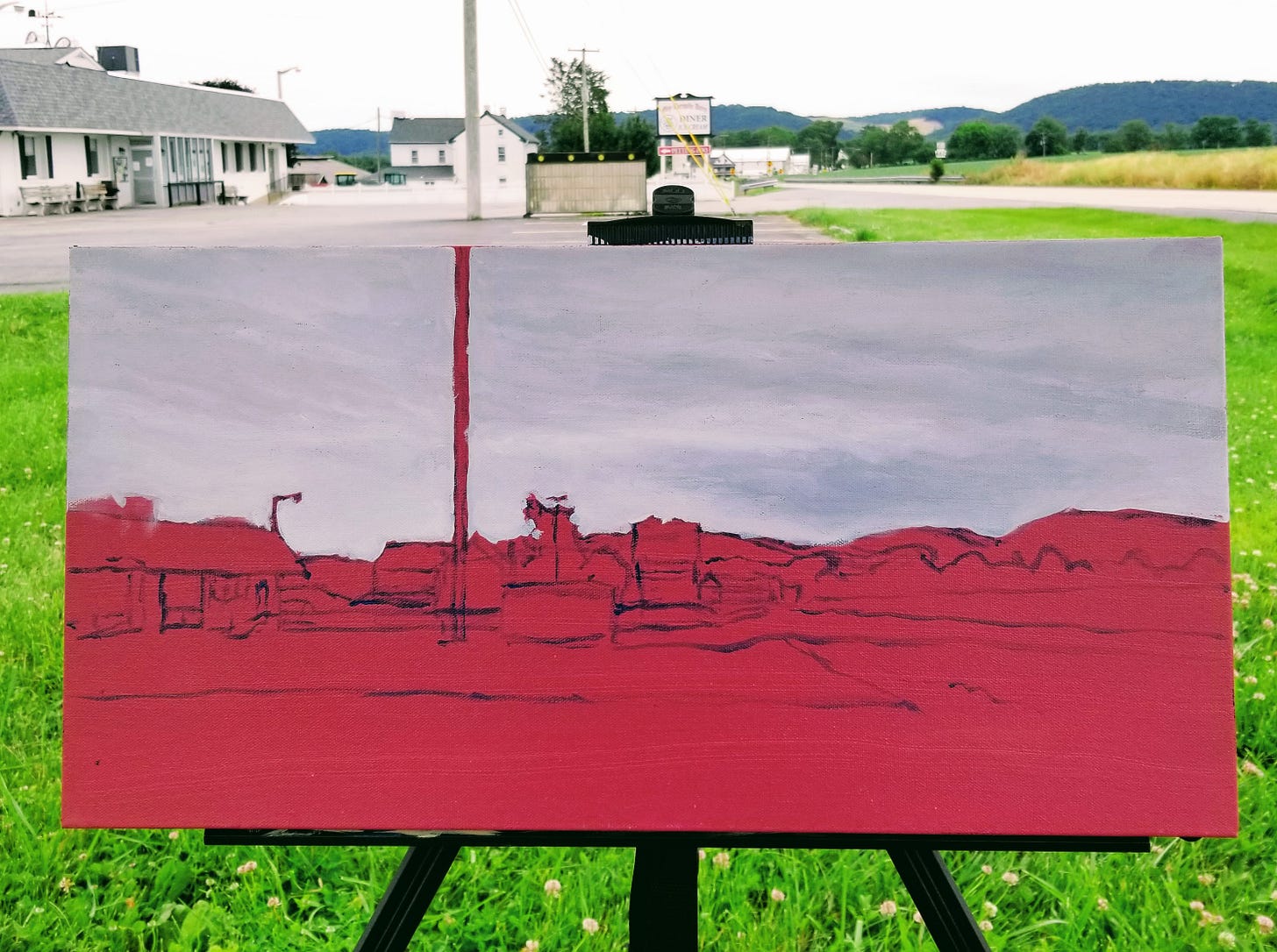
Personal items
Bring plenty of drinking water and a snack, sunscreen, bug spray, comfortable clothing, and a sun hat if needed. These things can be carried in a separate bag if necessary. Consider where you’ll go… if nature calls. Make sure your cellphone is charged.
Test it at home
I suggest testing your whole painting setup at home in the yard if you have one, or a nearby park. Carry the items out just as you would in the field, to see how convenient or heavy your setup really is, and whether anything can be removed or if anything is missing.
Once you’re all prepared, it’s time to go out and paint! Look for Part Two: Painting and Framing, available soon.
Do you have tips you’d like to share about plein air painting? Leave a comment below!



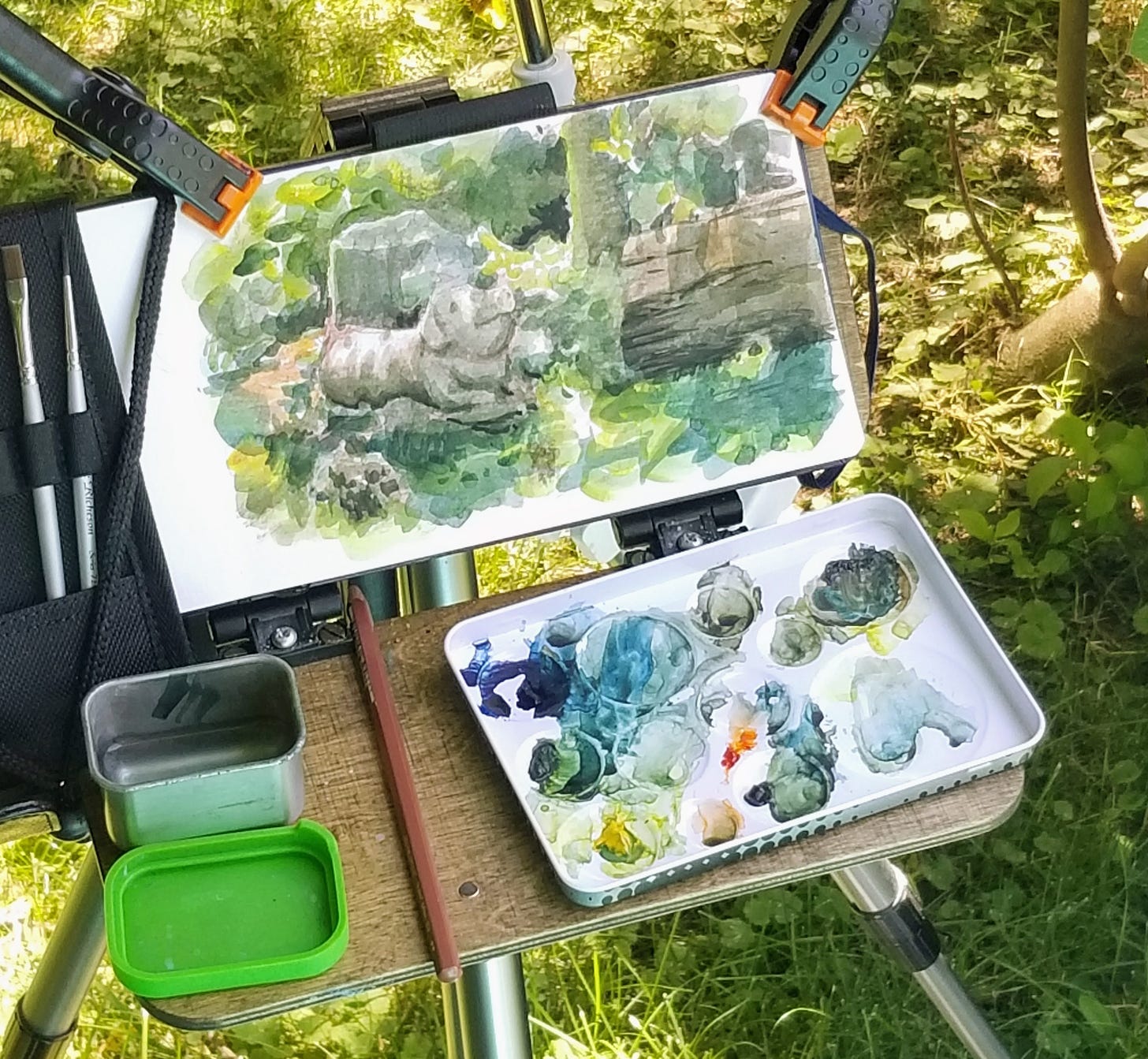
A good read Z, I'm so out of the habit with painting but these sorts of posts make me want to get back into it. Also enjoyed the subtle growth mindset mentioned, reframing things into positives